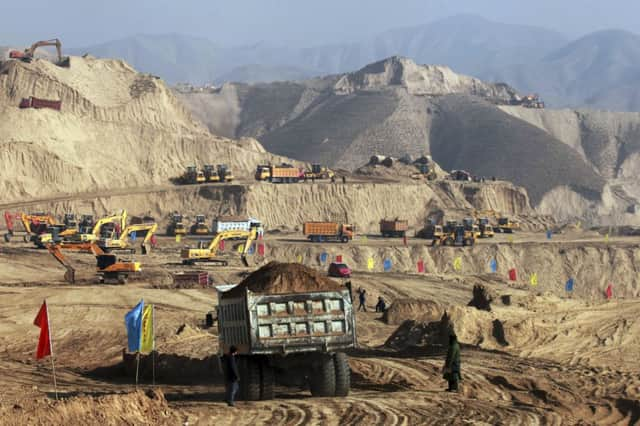China warned over the risks of building cities


The pollution, erosion and flooding caused by the unprecedented redistribution of earth will have a huge impact, according to researchers at Chang’an University.
Dozens of peaks up to 150 metres high have been flattened to fill valleys and create tens of square miles of land over the past decade.
Advertisement
Hide AdAdvertisement
Hide AdBut there has been little assessment of the costs and environmental impact of these projects, researchers at Chang’an University said in a piece published in the journal Nature.
“Land creation by cutting off hilltops and moving massive quantities of dirt is like performing major surgery on Earth’s crust,” the group said.
In addition to causing air and water pollution, erosion, landslides and flooding, the projects have destroyed farmland and habitat for wild animals and plants, the study found.
While mountaintop removal has been done before in mining in the United States, it has never been carried out on the scale under way in China or used to construct urban areas, the researchers said.
One of the authors, Li Peiyue, assistant professor of hydrogeology and environmental science, said that the development of cities must come at a price.
He added: “But we believe the government should be cautious in promoting the projects before proper experiments have shown that they are technological, geological and environmentally feasible.”
China’s government is in a major drive to move more rural residents to urban areas to develop into a more modern economy.
The first city to expand by bulldozing its mountaintops was Shiyan in central Hubei province in 2007. The transformation caused landslides and flooding, altered watercourses and increased the sediment content in local water sources, the article said.
Advertisement
Hide AdAdvertisement
Hide AdIn neighbouring Shaanxi province, Yan’an city aims to double its area by creating 30.5 square miles of flat ground in a project started in 2012 – the largest such project attempted on loess, a type of silt.
The project has destroyed farmland while filling valleys with a kind of earth that may lack firmness and be vulnerable to “geological disasters such as landslides,” Mr Li said.
The authors questioned the cost benefits of landfills, noting that the Yan’an project will cost 100 billion yuan (£9.5bn) over ten years, but that it will take at least that long for the filled-in valleys to become stable enough for building.
Jennifer Turner, director of the China Environment Forum at the Washington DC-based Wilson Centre think-tank, said the mountain-moving projects could leave China with more deserts and water shortages, as well as other unforeseen costs.
She added: “There are these uncoordinated massive engineering projects.
“And I wonder as well if anyone’s done any analysis, not only on the water footprint but the energy footprint of actually constructing cities in this way.”